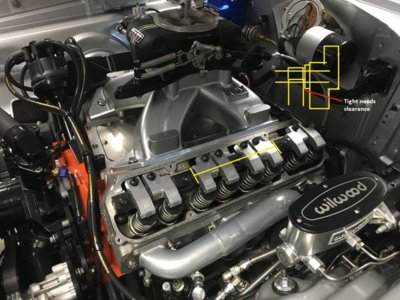PRHeads
Well-Known Member
- Local time
- 4:01 AM
- Joined
- Aug 31, 2018
- Messages
- 2,041
- Reaction score
- 3,015
- Location
- So. Burlington Vt
Bob, first let me say I haven’t tried using those lifters myself, so no first hand experience.
If you look at the pic of the OP’s lifters sitting in the tray with oil, you can see it has the small holes above the big holes on one side of the lifter, and on the opposite side it looks more like a keyhole where they connected the two holes.
With an unbushed block, neither of those holes would be lined up with the oil gallery in the block with the cam down near the base circle?
With his lifters, installed so the link bar is towards the center of the block, the “keyhole” side is towards the oil gallery.
As for the noise.
I’ve used that particular lobe series countless times. I’ve never found them to be particularly noisy.
What I’d suggest is making sure there is no binding between the pushrods and the heads.
The problem would likely be on the intakes.
With the cam on the base circle, loosen the adjuster screw and make sure the pushrod has some available side to side free play in all directions.
I’m not a fan of having drag on the rockers.
I’d machine the spacers between the rockers a touch so I had some free play.
I like .015-.020 total per pair.
Are you adjusting the valves per the “EOIC” method?
If you look at the pic of the OP’s lifters sitting in the tray with oil, you can see it has the small holes above the big holes on one side of the lifter, and on the opposite side it looks more like a keyhole where they connected the two holes.
With an unbushed block, neither of those holes would be lined up with the oil gallery in the block with the cam down near the base circle?
With his lifters, installed so the link bar is towards the center of the block, the “keyhole” side is towards the oil gallery.
As for the noise.
I’ve used that particular lobe series countless times. I’ve never found them to be particularly noisy.
What I’d suggest is making sure there is no binding between the pushrods and the heads.
The problem would likely be on the intakes.
With the cam on the base circle, loosen the adjuster screw and make sure the pushrod has some available side to side free play in all directions.
I’m not a fan of having drag on the rockers.
I’d machine the spacers between the rockers a touch so I had some free play.
I like .015-.020 total per pair.
Are you adjusting the valves per the “EOIC” method?
Last edited:

















